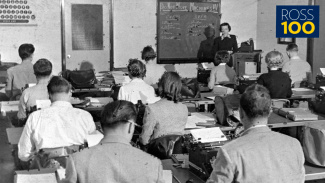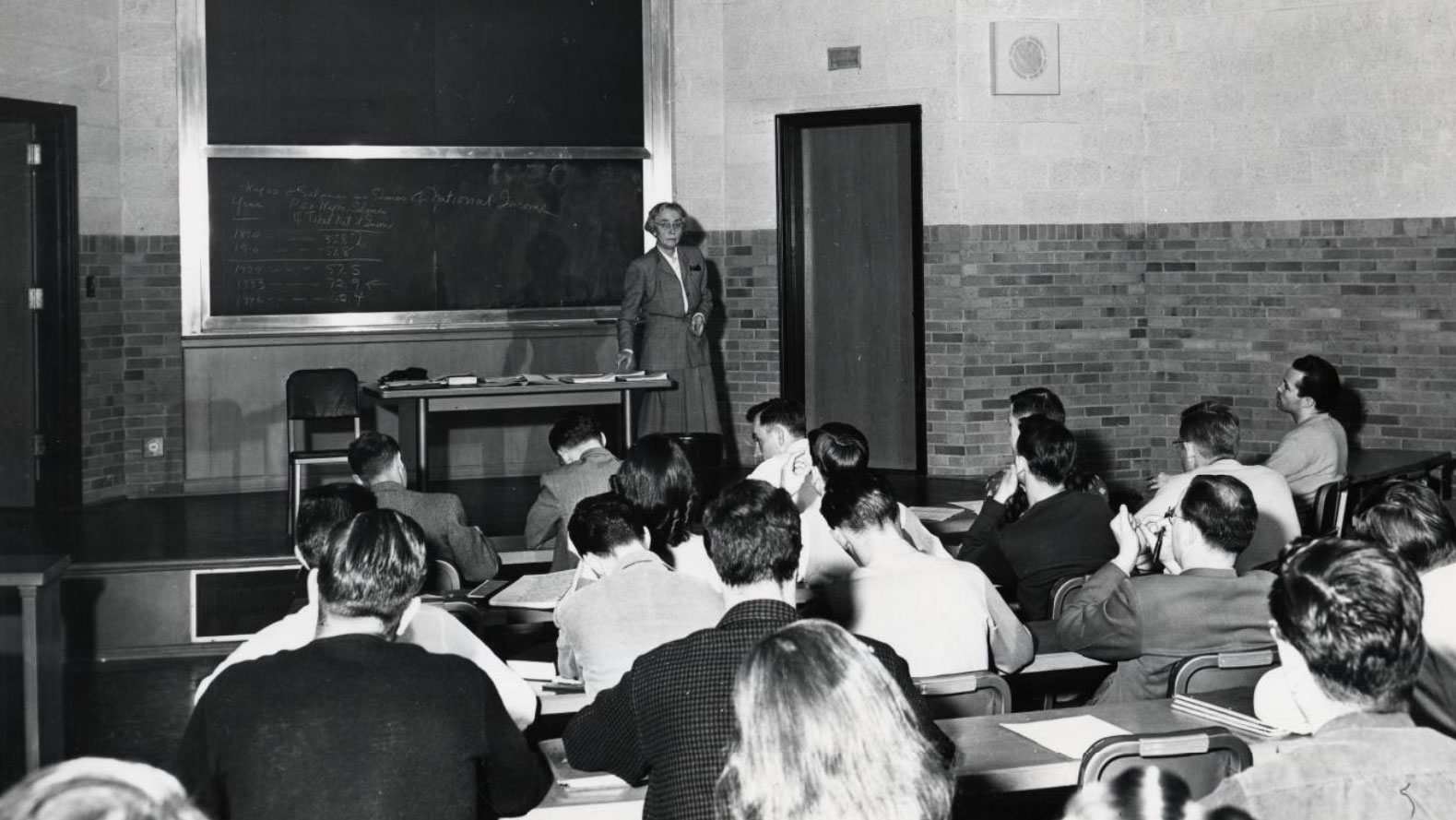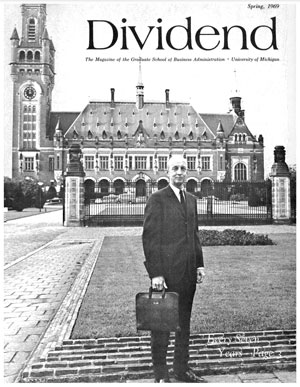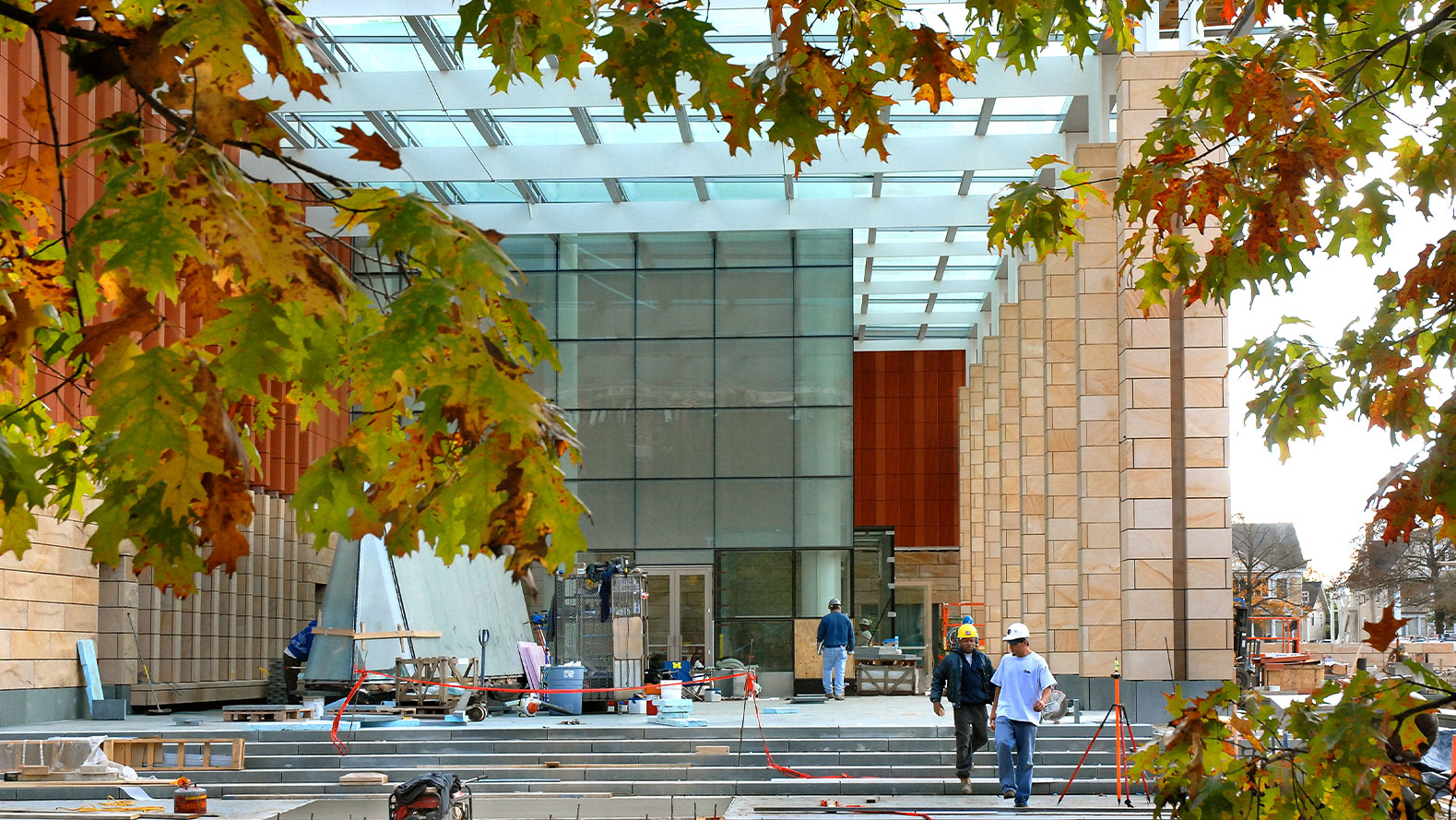One-Hundred Years of Innovation at Michigan Ross

With the Ross School of Business celebrating its 100-year anniversary in 2024, we’re looking back on some of the school’s most notable “firsts” over the past century.
Since 1924, Michigan Ross has changed a lot — and so has business. In the 1920s, the United States was in the midst of a brief era of prosperity known as “the Roaring Twenties.” The global economy was recovering from World War I, the total wealth of the United States more than doubled between 1920-1929, and the nation’s gross national product expanded by 40%, according to History.com.
Consumerism as we know it today was taking hold. Advertising was more prevalent than ever, and the average American could afford to spend on things they wanted. The most impactful product of the era was the Ford Model T, which you could purchase for just $260 in 1924 — that’s around $4,519.46 today, according to the U.S. Bureau of Labor Statistics.
Business was changing in the 1920s to accommodate a new world that was more connected and had more buying power than ever before, and Michigan Ross was established in 1924 to help future business leaders navigate it. From then on, the school would experience many firsts that would further change business and business education as we know it.
The First Degree
The very first graduate degree offered at Michigan Ross, which was then simply called “the University of Michigan School of Business Administration,” was the MBA. The program took five years to complete, counting undergraduate studies, and consisted of three years of general studies followed by two years of business education. U-M had offered business courses before the foundation of Michigan Ross but phased out its prior business certification program after 1925.
The MBA program was created by the highly respected economics professor Edmund Ezra Day, who also became the school’s first dean. He had lofty goals to change the way that business as a field was perceived at the time. Once considered more of a trade than an academic field of study, Day wanted business to be seen and studied as the complex topic that it is.
“Give us but five years, and we will turn out a product which we will certify as satisfactory, sound, and capable. We do not plan to make expert technicians. Ours is the task of making business scientists,” Day told The Detroit News in 1923.

The First Faculty
During its first year of operation in 1924, Michigan Ross employed one associate professor, four assistant professors, two lecturers, and four instructors. These scholars came from U-M, Harvard University, and Carnegie Tech.
A few of the instructors came to U-M with Dean Edmund Ezra Day from Harvard, including professors Olin Blackett, Margaret Elliott Tracy, Robert Masson, John Mitchell, and Carl Schmalz. The professors hailing originally from U-M included professors William A. Paton, Clare E. Griffin, and Robert Gordon Rodkey.
Margaret Elliott Tracy was the first and, for a time, only female faculty member at Michigan Ross and went on to become the first woman to become a full professor at the business school. Also notably, William A. Paton went on to make a lasting impact on the field of accounting and won many awards for his teaching, including the American Institute of Certified Public Accountants’ Outstanding Educator of the Century award in 1987.
The First Commencement
The first Michigan Ross class received their MBA degrees after completing two years of business education in 1926. The class consisted of men from many backgrounds, including international students from China and Japan, as well as a single woman, the first to earn her MBA at Michigan Ross: Sih Eu-Yang Chen.
The handful of MBA students graduated alongside 1,705 other U-M students before a crowd of thousands. Of the first class, five MBAs became academics, one went into banking, two into finance, and others chose management, government, and marketing. Sih Eu-Yang, the sole woman, eventually found a career as a chief accountant and, later, an English teacher in Hong Kong.
The Class of 1926’s two top students, Maynard Phelps and Merwin H. Waterman, remained at the university and joined the faculty roster.
“When we entered the new School of Business Administration in the fall of 1924, there were 22 hopeful students and 14 faculty members. When we graduated in 1926, we were two of 12 who received the MBA degree… Undoubtedly, we were the “guinea pigs” for much experimentation, but we survived and even enjoyed the experience,” Phelps and Waterman wrote in the Fall 1971 issue of Dividend.
The First Dividend

As Michigan Ross grew over the years, efforts to reach out and create a more connected alumni community did as well. In the 1960s, Michigan Ross circulated a publication called the Alumni Bulletin, which was distributed to alums of the school, who were around 10,000 in number by 1970. In 1969, the Alumni Bulletin was transformed and rebranded into Dividend, which remains the name of the Michigan Ross alumni publication to this day. Dividend featured school news, faculty research, and interviews with notable alumni from the school.
Many alums were eager to assist with and be featured in Dividend, and this increased interest from alumni in the school helped contribute to the long-term success of Michigan Ross.
Following the success of this growing alumni community, the school appointed its first alumni relations director in 1970 and created a communication network of alums that spanned the country. Two newly formed alumni associations in New York and California met for the first time in 1972, creating the foundations of what would eventually become the global network of Michigan Ross alumni that exists today.
The First MAP
In the 1980s, Dean Gilbert R. Whitaker appointed a committee and challenged faculty to come up with a way to improve and transform the school’s curriculum. Though student enrollment had doubled at Michigan Ross in the past decade, the dean and other university leadership were well aware that graduates in business now faced new problems in the evolving world that their curriculum needed to address.
The idea that the group settled upon would come to be called Multidisciplinary Action Projects, or MAP. MAP was the very first program of its kind at any business school. It proposed that MBA students would, as a degree requirement, gain experience at real companies and organizations before graduation.
This revolutionary program made Michigan Ross the place to go for students seeking an education that incorporated real-world learning, and the method would later be replicated by other schools across the country. Today, after 33 years of MAP, there have been projects based in 98 different countries at more than 1,500 businesses, with more than 17,000 students participating since 1990.
The First Centers and Institutes
As Michigan Ross and its network continued to grow and evolve, so did the education it offered to students. In the 1990s, Michigan Ross began to expand its curriculum, allowing students to be credited for hours of graduate study in other areas of the university, like the Law School, the Ford School of Public Policy, Michigan Engineering, and more.
This rise of interdisciplinary study led to the creation of centers and institutes of learning, like the William Davidson Institute, which was established in 1992. William Davidson, BBA ’47, a highly successful business owner, contributed $30 million to Michigan Ross to establish this institute, which would focus on helping businesses in transitional societies adapt to a free-market economy.
In 1991, inspired by global changes to manufacturing and technology, Michigan Ross partnered with Michigan Engineering and a 31-member Industrial Advisory Board to create the Michigan Joint Manufacturing Initiative. In 1995, Joel D. Tauber, BA ’56/MBA ’62/JD ’59, contributed $5 million to this initiative to create what later became known as the Tauber Institute for Global Operations. Tauber evolved over time to become one of the country’s top interdisciplinary engineering and business institutes.

The New Building
In 2004, Stephen M. Ross, BBA ’62, a visionary alum and New York real estate developer, contributed what was at the time the largest donation ever made to U-M, $100 million, and the business school was renamed in his honor. His donation funded a brand-new, 179,000-square-foot building complete with numerous classrooms, study spaces, a library, a fitness center, and much more.
This brand-new campus housed the school’s students, faculty, staff, and numerous centers and institutes. With dedicated space for classwork and the highly collaborative group work that Michigan Ross had become known for, the school entered an era of exciting growth in the 2010s.
Innovation Today
Today, Michigan Ross continues to innovate each year to adapt to new challenges in business, including the rise of AI, climate change, and more.
The school has expanded its degree offerings to develop leaders for in-demand career paths like business analytics and also to accommodate working students who choose to remain fully employed while earning their degrees online. New technology like the Convatec Digital Learning Studio has made collaboration and engagement with students and faculty unable to meet in person more seamless than ever before.
The school has also continued to refine its curriculum, with its programs, from Full-Time MBA to Executive MBA, regularly ranking among the top 10 in the country.
One hundred years after 1924, the world is a very different place, but Michigan Ross has proudly evolved to serve future leaders in business and will continue to do so.







